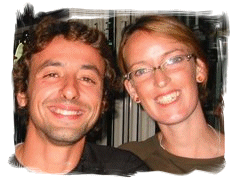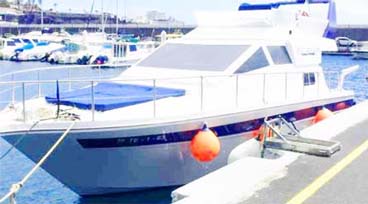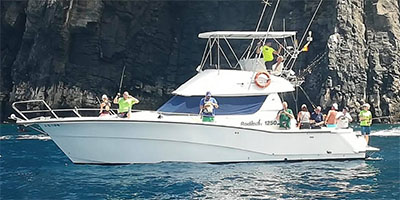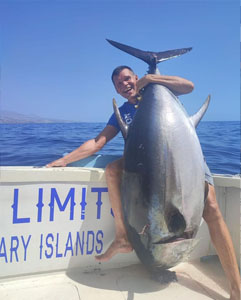Tenerife
 Granadilla Diving PADI Discover Scuba Diving (DSD)
Granadilla Diving PADI Discover Scuba Diving (DSD)
“Not everyone has the time to book a course without first getting a taste of scuba diving. We offer try diving programs for non-certified divers. You will be under our guidance and follow the highest of safety standards.
The difference between these experience programs and a PADI Diving Course is that, after completion, you do not receive a diving license, but you can repeat the programs as many times you want, and will always be accompanied by a PADI Professional. The advantage is that you need only one day for this program and, your experience may also give you a credit towards the PADI Open Water Diver.
Here at Granadilla Diving we guarantee to provide you with an exclusive introductory training session for your PADI Discover Scuba Dive. Whether it’s you taking the plunge on your own or you’re wanting to share the experience with your buddies, rest assured, you are going to be the only students in the water with our instructors receiving their undivided attention as we begin your scuba adventure.”
Private Yacht Accommodation for your diving course can be found at Tenerife Boat Holidays
Gran Canaria

Discover the wonder of scuba diving in Gran Canaria with Aquanauts, the family run dive school with our feet in the sea.
You can find Aquanauts dive centre / dive school at Puerto Rico beach in Gran Canaria. They are a PADI dive centre for all level of divers, from beginners to the most experienced scuba divers.
For qualified scuba divers they organise daily diving trips, visiting all the dive sites of Gran Canaria from shore or by boat. With many sites to choose from, including wrecks and reefs, all of them teeming with life there is something for every diver. You can search out moray eels and octopus at the Marine Reserve Arinaga, or dive with manta rays playing in your bubbles at Caletta. more about Gran Canaria dive sites.
If you have always wanted to try diving you can take the PADI Discover Scuba Diving Programme. . If you get addicted why not go on and complete a PADI scuba diving certification. Scuba Diving Courses in Gran Canaria.






 Every parent wants their child to swim for various reasons, the main one being that they want their child to be able to get out of trouble if they find themselves in the water. This is why swimming lessons are important to the parent.
Every parent wants their child to swim for various reasons, the main one being that they want their child to be able to get out of trouble if they find themselves in the water. This is why swimming lessons are important to the parent.













